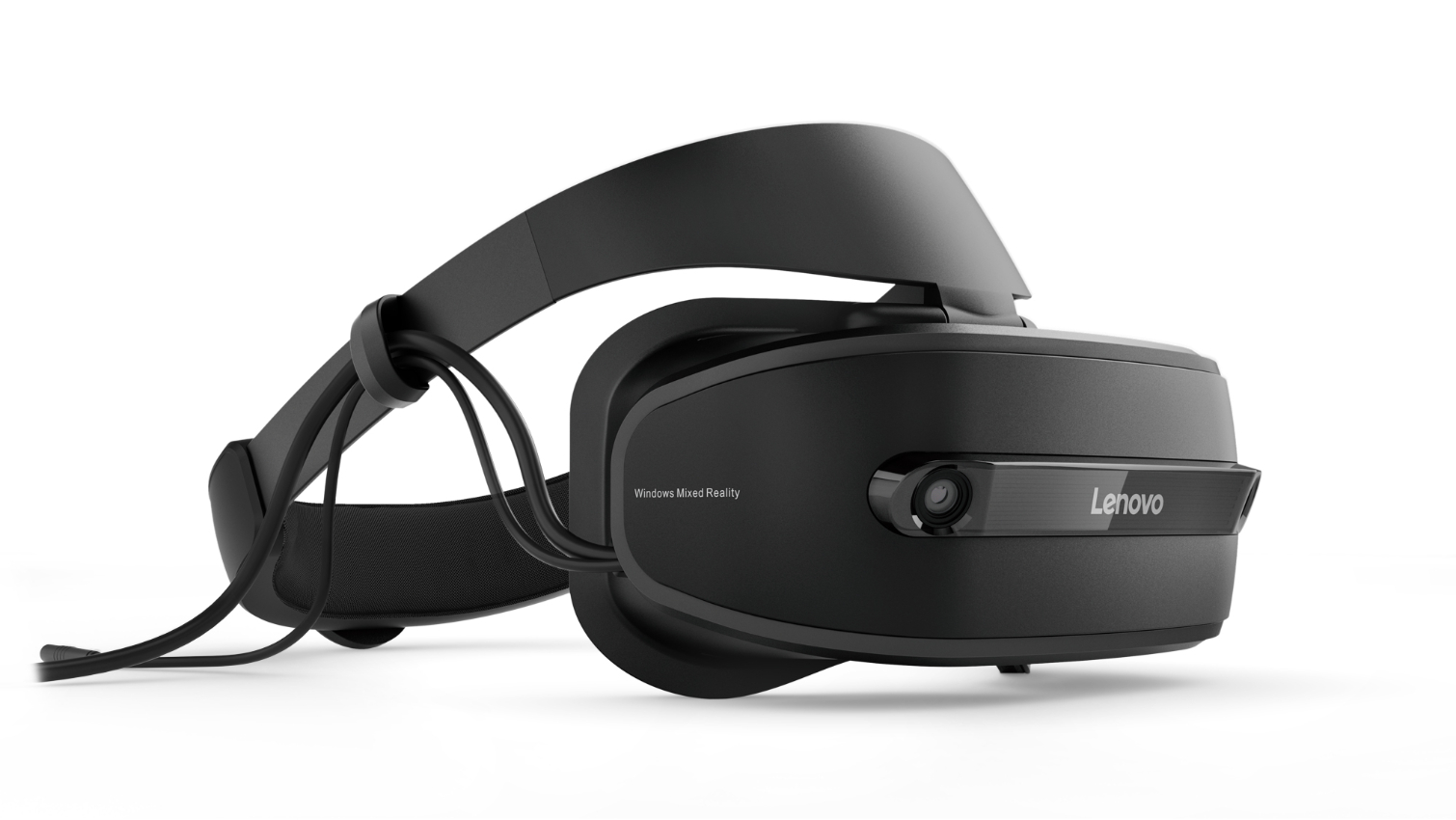Lenovo’s Windows MR Headset Is Called Explorer, Costs $350
Microsoft’s Windows Mixed Reality platform is just around the corner, and the company’s hardware partners are starting to talk about the details. Dell detailed its Visor HMD on Monday, and Asus revealed its Windows MR HMD on Wednesday. Today, Lenovo revealed that its Microsoft’s VR HMD is called the Lenovo Explorer. The company also revealed a few details, though for months we’ve known more about Lenovo’s headset than the company discussed today.
Unlike the Asus and Dell headsets, which we knew precious little of except that they were coming, we’ve already encountered the Lenovo HMD before. Our first introduction to the hardware came at CES 2017, where Lenovo was showing off a prototype shell of what ultimately became the Lenovo Explorer.
The prototype headset wasn’t operational, but the device that we saw in January looks identical to the final device. The headset retains the single adjustable headband with the dial on the rear like the PSVR. Lenovo didn’t say how much the Explorer HMD weighs, but the company said it focused on making the device “comfortable and lightweight,” and “finely tuned for perfect balance.” When we tried the headset on at CES, we were told the device weighed roughly 350g. The final device could be heavier, but Dell also managed to bring the weight below 400g, so we don’t expect Lenovo’s device to have gained much weight if any at all.
Lenovo’s headset also retains the flip up visor that we tried in January, which allows you to quickly lift the screens from your face so you can talk to the people around you, assess your true surroundings, or grab a sip of a drink without taking the headset off.
The Lenovo Explorer features inside-out spatial tracking, just like the other Windows MR devices. Two front-mounted cameras handle environment tracking. Lenovo said the Explorer headset offers trackable space as large as 3.5 x 3.5 meters. With the camera’s mounted in the headset, we’re not sure why Lenovo restricts the trackable area to such a small space, but we suspect that the limitation stems from the tether cable. Lenovo’s Explorer Windows MR HMD is not wireless, and it is not a self-contained device. You must plug it into a Windows MR capable PC to use it. Lenovo didn’t say how long the tether is, but it said the tether is a single cable with a Y-split that features HDMI and USB ends.
Curiously, Lenovo didn’t say anything about the displays inside the final hardware. We don’t know for sure what the resolution is, and we can’t confirm the display type, but in January we were told that it would include dual 1440 x 1440 displays.





When we spoke to the Lenovo representative during our CES demo, we learned that Lenovo was targeting a sub-$400 price tag, and the company would shoot for as close to $300 as it could. In May, Microsoft revealed further details about the hardware that its partners would bring to market and reiterated that Lenovo's headset would be “incredibly affordable.” Unfortunately, the company didn’t get the costs down low enough to sell the headset for $300, but the price isn’t far off. Lenovo set the starting price at $349 for the solo headset. You can also get the Explorer in a bundle with Microsoft’s motion controllers for $449.
Get Tom's Hardware's best news and in-depth reviews, straight to your inbox.
Lenovo didn’t announce the release date, but we expect to see the hardware ship this fall alongside Microsoft’s Windows 10 Creators Update and the Windows Mixed Reality platform.
Kevin Carbotte is a contributing writer for Tom's Hardware who primarily covers VR and AR hardware. He has been writing for us for more than four years.

